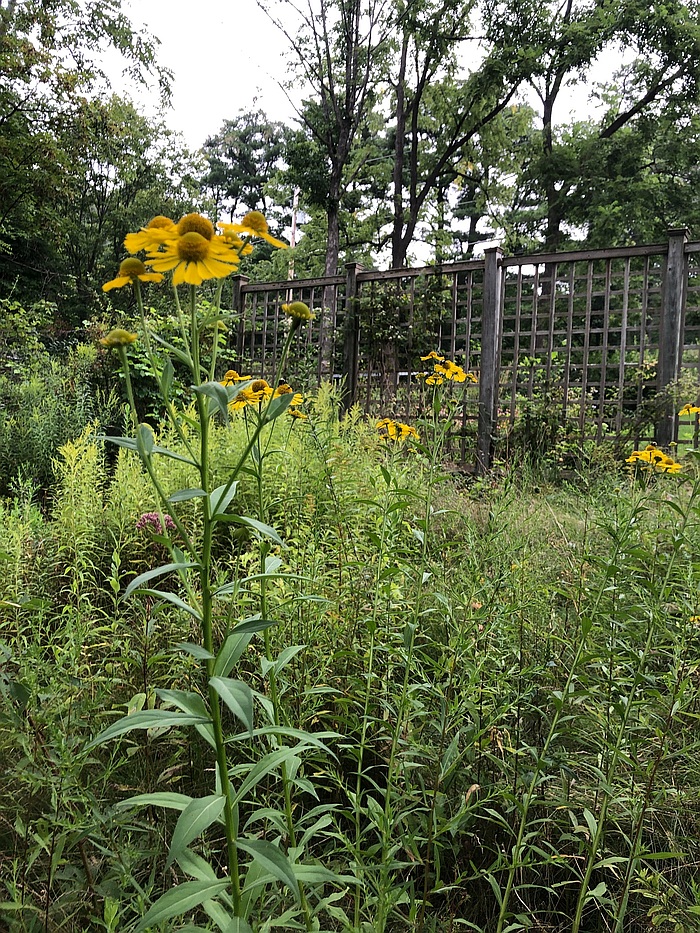A Primer: Key Points for Creating a Pollinator Garden or Meadow
- Pollinators include bees, beetles, moths, flies, and butterflies. Even bats in some areas.
- Providing nectar & pollen for adult insects is good, but not sufficient. You must provide food sources for larval stages and often “homes”.
- While nectar & pollen can be provided by non-natives, the larval hosts must be regional natives. Many lists of “good pollinator species” include those which are NOT native to central NY. Look to a regional source for determining native status. See references.
- A couple of plants of each species is not enough. Use as big a population as you can manage.
- Try for blooms throughout the season to accommodate native species with short feeding seasons.
- Accept that a pollinator garden or meadow will require maintenance, or at least editing to keep aggressive species from limiting the diversity of your garden.
- Having a clear edge/border to your garden or meadow can significantly aid in gaining acceptance from neighbors and conventional gardeners.
- You will be sorry if you do not remove turf grass prior to starting a meadow type pollinator habitat. Start smaller and work up as you are able to clear ground.
References:
Finger Lakes Native Plant Society website: https://flnps.org/ - pages under News & Resources include links for turning lawns into meadows, gardening for native bees, etc. Pages under Plants & Places list both native (to the Finger Lakes region) and naturalized plants of garden interest.
New York Flora Atlas https://newyork.plantatlas.usf.edu/ - the most accurate source for native status of a species. Search by scientific or common name. State native status is listed, and a map of counties with verified locations is shown. Judge local status by the distribution of counties since absence of a verified location is not the same as saying “not found there.”



